The Turns of Tango
The Turn of Tango is one of the FIVE Social Figures that we use in Tango all the time! There are way more on the site than is represented here on this page. These are just a few samples of the 800+ videos and articles (not including all the other stuff) on Tango Topics for you to watch and learn from. It’s not just the videos, but the articles that contain the most of what you need to know to elevate your dance.
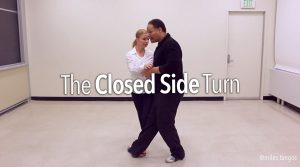
The Close Side Turn
What is a Closed Side Turn ? The simplest way that I can put this is that the Closed Side Turn is a Molinete/Giro structure that turns to the right (for the Lead), and the left (for the Follower) with a very simple modification.
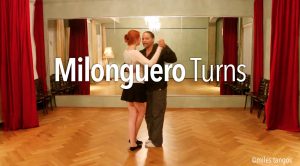
The Milonguero Turn
In it’s simplest form, the Milonguero Turn is one of the easiest of turns to accomplish with regards to Argentine Tango. It allows of the couple to stay with each other, and allows for an easeful experience vs. the Follower’s Molinete that is the default turn today which is a load of work for the Follower to accomplish!

Milonguero Turn ‘Trick’.
What is the Milonguero Turn Trick ? First and foremost, the Trick itself isn’t a ‘trick’, it’s more of a reliance on Follower Default behaviors. Secondly, the ‘Trick’ only solves the first major hurdle of the Turn itself – The Follower’s Back Cross.

Follower’s Molinete
Every social dance has a variation of a very old idea known as a “Grape Vine Turn”, which is generally 3 steps in either a circular or linear pattern. Argentine Tango is no exception to this factoid. Truthfully Tango has spawned and borrowed and given 8 types of turns based
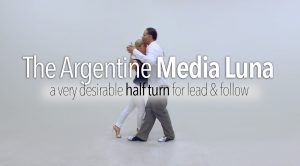
The Argentine Media Luna
What is an Argentine Media Luna ? The words, “Media” & “Luna” when translated from their Spanish to English cognates, translate as “Half” & “Moon” or in this case, “Half Turn”. It is exactly what it sounds like but with a Tango twist. In many ways it resembles the Follower’s Molinete. And if you don’t know any better, you could swear that they’re exactly the same…but they’re not….

Ocho Cortado Wrap
What is An Ocho Cortado Wrap ? Put simply it’s a Follower’s leg wrap (an Enganche) mixed with an Ocho Cortado (the ‘Broken’ Ocho). To be fair the Ocho Cortado is not really an Ocho, not by any stretch of the imagination, nor is it a broken one at that. It is more akin to the Follower’s Molinete more than anything else.
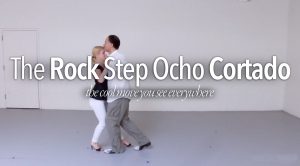
The Rock Step Ocho Cortado
This topic deals with two of the common eight turns, combining them into one movement to turn down the line of dance.

Crossing Sacada Turn
What is a Crossing Sacada Turn ? In its simplest form it’s nothing more than a series of Simple Sacadas that are chained together that just so happen to utilize the Follower’s Molinete or ‘Turn’, which employs the Argentine Cross as it’s basis for entry. While the turn can be done without this entry point, it loses it’s ‘elegance’ by without using the Argentine Cross.

The Follower’s Shortened Side Step
What is the Follower’s Shortened Side Step ? It’s exactly what it sounds like, it’s a side step that is much, much smaller. By default when we’re performing the Follower’s Molinete (as Followers) you may have been told early on by various and sundry teachers that we want to create evenly sized steps.
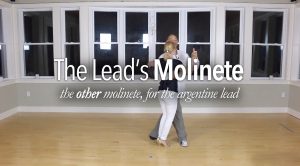
The Lead’s Molinete
What is a LEAD Molinete ? It is exactly as described, a Grapevine Turn that consists of an applied dissociative backstep, a ‘circular’ side step, and a dissociative forward step. That’s it. It doesn’t get any more complex than that. The only difference is that instead of the Follower doing this vocabulary, the Lead does it.
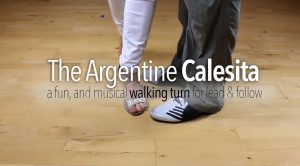
The Argentine Calesita
What is an Argentine Calesita ? The word “Calesita” roughly translates as Carousel or in English, a ‘Merry-Go-Round’. Anytime the you see a ‘sita’ or ‘cita’ ending on a Spanish word, it means that whatever object is being modified is small, or made smaller, tiny. So this is a small carousel, or a small ‘Merry-Go-Round’. The Argentine Calesita is a basically a small turn! It’s nothing more than a variation on a El Giro De Caminando or The Walking Turn.
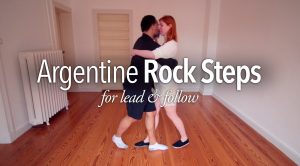
Argentine Rock Steps
An Argentine Rock Step is a little different. It refers to a very specific construct, and is not swaying to from side to side, or back and forth, but actually weight transfer to weight transfer (usually back and forth) sometimes with a Resolution (more on that later). In a lot of ways a ‘Rock’ Step appears to look like (operative word) as if the couple dancing were a Rocking Chair.

Social Colgadas
A ‘Social’ Colgada means that the Colgada takes up very little space, while in Close Embrace, which can be used as alternative of the Follower’s Molinete to turn the couple in the line of dance. 😉
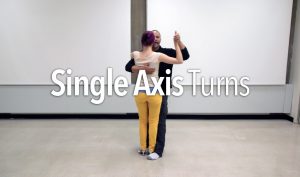
Single Axis Turns
The Single Axis Turn is tango specific language to describe a type of turn where the shared axis (that’s the ‘single’ part) movement between the partnership results in a deliberate turn or rotation, more a rotation than anything else. In much the same way that a Volcada is a shared axis movement, the Single Axis Turn is exactly the same in that respect. However, where as in the case of the Volcada, where the partnership goes towards each other, in this case, they go away.
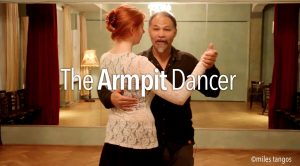
The Arm Pit Dancer
What is an Arm Pit Dancer ? Put simply the Arm Pit Dancer is where most Leads place their Followers in their arm pit in order to dance with the Follower. Here’s the strange part > Most Followers willingly go there and stay there! To be fair, most Leads have a compressive embrace with their right arm so the Follower can not necessarily change their bodily position even if they were a.) aware. and b.) wanted to do so. Why is this a problem ? Read on….
